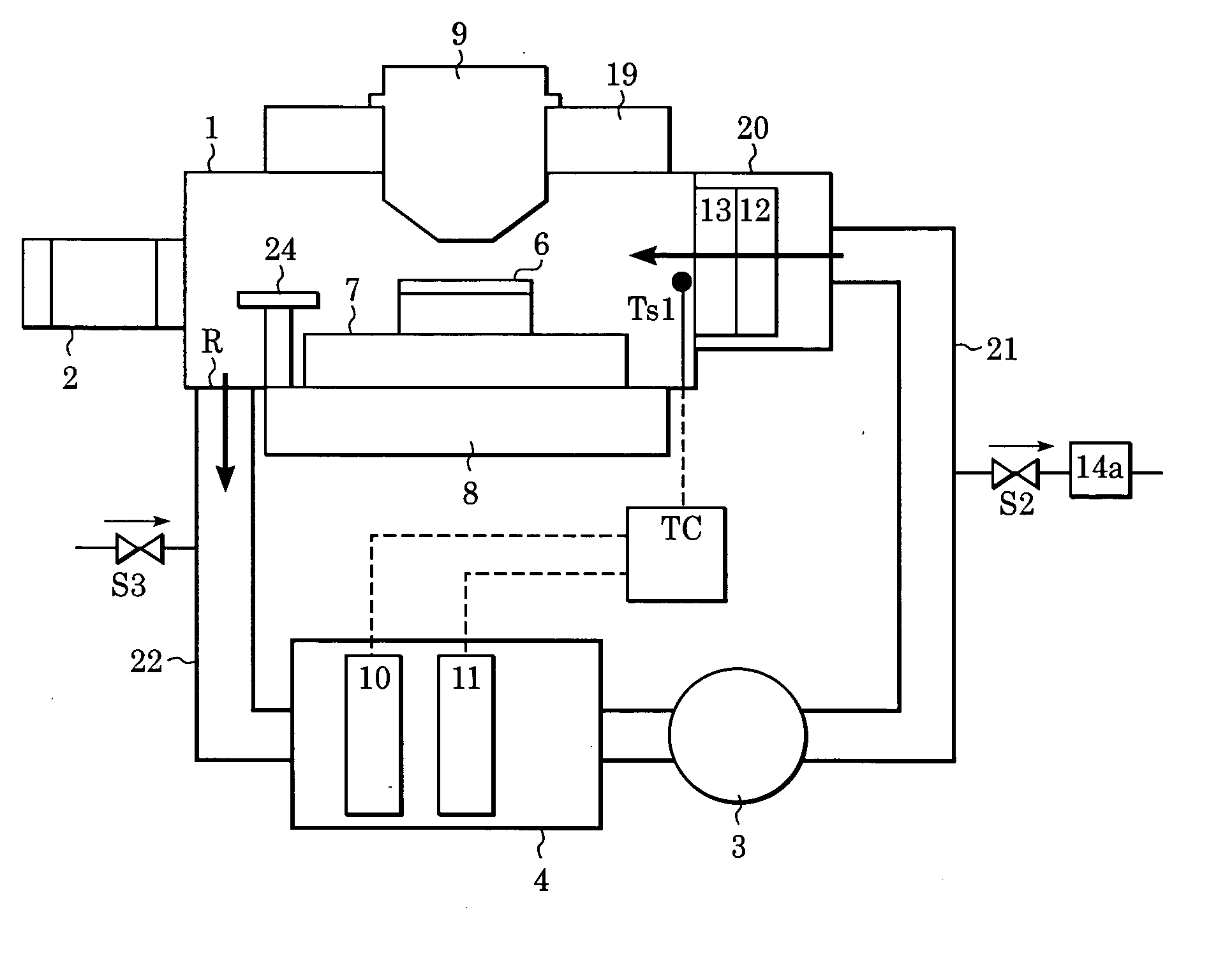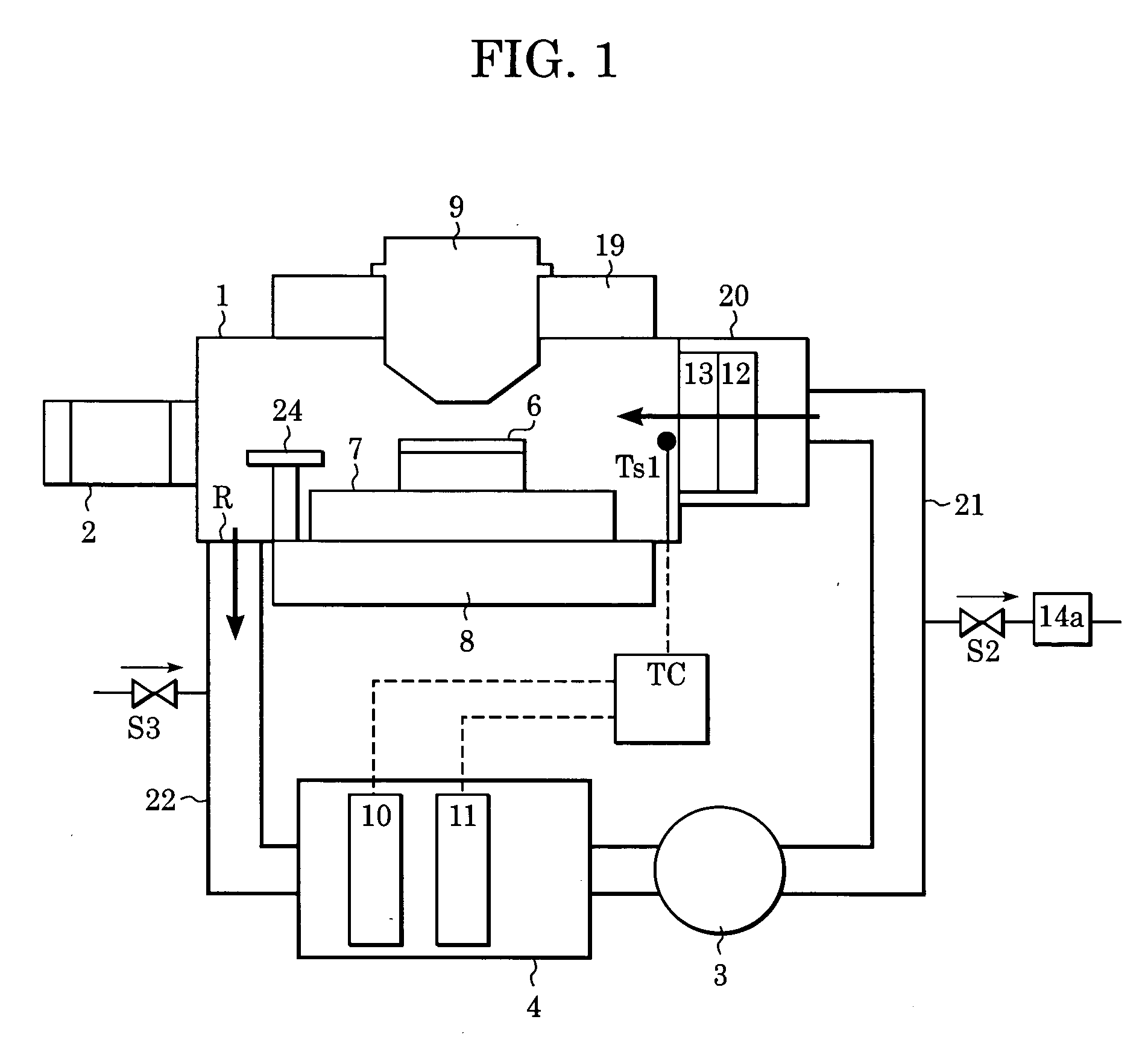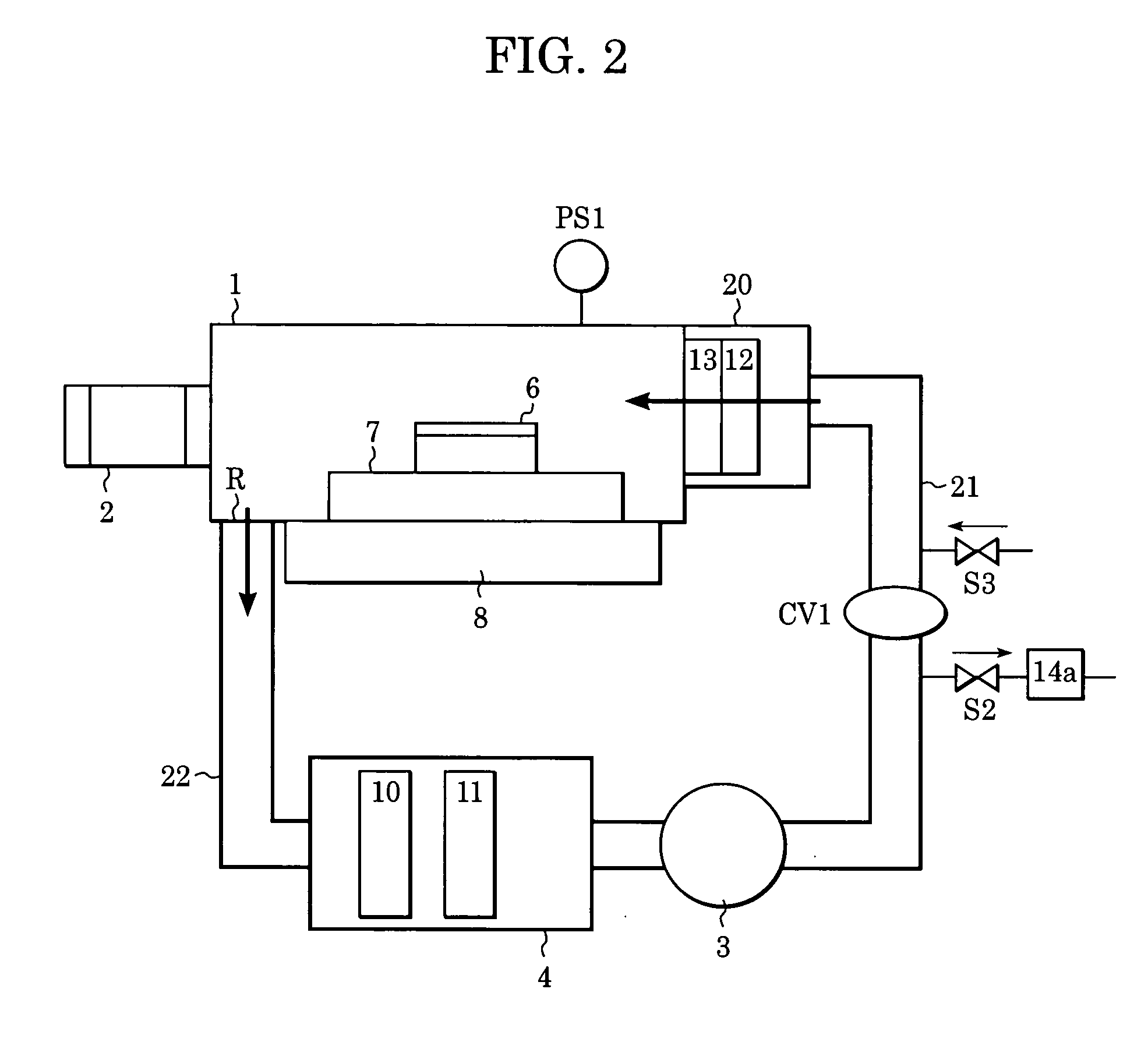Exposure technique
a technology of exposure and spherical filter, applied in the field of exposure techniques, can solve the problems of increasing the time required for the whole initial purge, disadvantageous time required for the initial purge, and increasing the time required for the initial purge, and achieves the effects of high purity, high productivity, and low running cos
- Summary
- Abstract
- Description
- Claims
- Application Information
AI Technical Summary
Benefits of technology
Problems solved by technology
Method used
Image
Examples
embodiment 1
[0043]FIGS. 2 and 3 are schematic views each showing a gas circulating air-conditioning device (atmosphere control device) as an inert gas circulating device of an exposure apparatus according to Embodiment 1 of the present invention. The same reference numerals of the constituent elements of the inert gas circulating device in FIG. 1 shown as the case of the related device designate the same constituent elements of this embodiment, and description thereof will be omitted. In addition, the projection optical system 9, the structural member 19, the wafer transfer system 24, the temperature sensor Ts1, and the temperature control device TC are not shown in the figure and will not be described. This embodiment will be described using the airtight chamber 1 which receives a wafer side by way of example. However, the same situation as the case mentioned above can be naturally contemplated at a reticle side. The airtight chamber 1 is approximately sealed from the exterior atmosphere and i...
embodiment 2
[0051]FIG. 4 is a schematic view showing a gas circulating air-conditioning device as an inert gas circulating device of an exposure apparatus according to Embodiment 2 of the present invention. Unlike the case of Embodiment 1 shown in FIG. 3, in this embodiment, filters such as the dust collector filter 13 and the chemical filter 12 provided at the airtight chamber 1 side are received in a filter box 5 which is a separate housing formed so that a gas in the space thereof can be independently replaced with an inert gas. In addition, unlike the case shown in FIG. 3, a circulation path valve CV2 is provided in a circulation relay path 23 connecting between the air conditioner 4 and the filter box 5, and an inert gas exhaust path S4 and an inert gas supply path S1 are provided upstream and downstream of the circulation path valve CV2. In FIG. 4, when the circulation path valves CV1 and CV2 are closed, the airtight state of the space in the filer box 5 can be maintained, and furthermore...
embodiment 3
[0056]FIG. 5 is a schematic view showing a gas circulating air-conditioning device as an inert gas circulating device of an exposure apparatus according to Embodiment 3 of the present invention. Unlike the Embodiment 2 shown in FIG. 4, in this embodiment, there are provided a heating device 15 as a filter heating device for heating the filters received in the filter box 5, a temperature sensor Ts2 for sensing a temperature in the filter box, and a temperature control device 16 for controlling an output of the heating device 15 to set the temperature sensed by the temperature sensor Ts2 to a predetermined value, so that a function of depleting moisture is additionally formed in which moisture adsorbed onto the filters are removed outside by heating. In addition, as shown in FIG. 5, there are provided a drain line S7 communicating with the filter box 5, a drain tank 25 connected to the drain line S7, and valves V1 and V2 connected to two ends of this drain tank 25, so that when gather...
PUM
 Login to View More
Login to View More Abstract
Description
Claims
Application Information
 Login to View More
Login to View More - R&D
- Intellectual Property
- Life Sciences
- Materials
- Tech Scout
- Unparalleled Data Quality
- Higher Quality Content
- 60% Fewer Hallucinations
Browse by: Latest US Patents, China's latest patents, Technical Efficacy Thesaurus, Application Domain, Technology Topic, Popular Technical Reports.
© 2025 PatSnap. All rights reserved.Legal|Privacy policy|Modern Slavery Act Transparency Statement|Sitemap|About US| Contact US: help@patsnap.com



